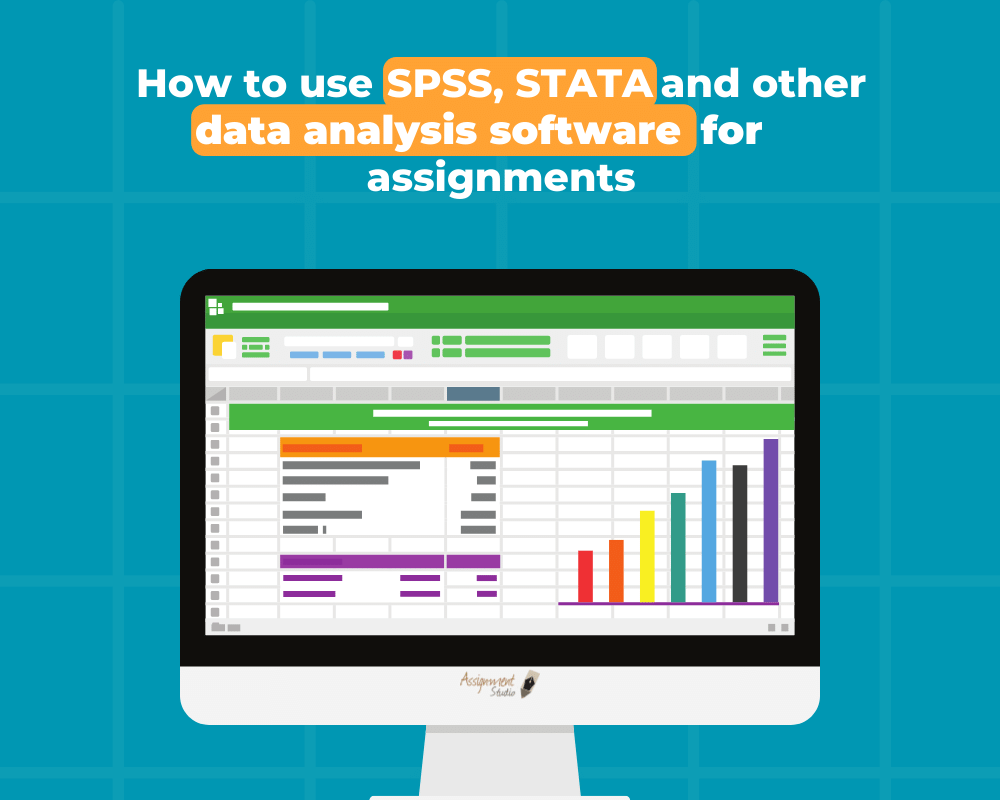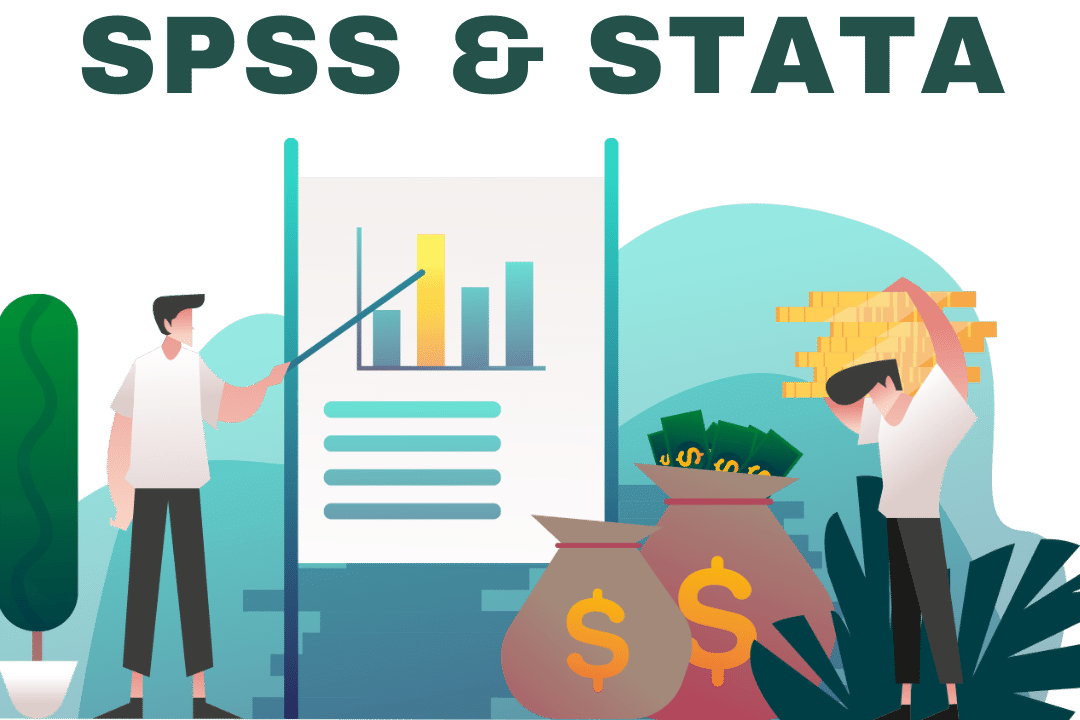
SPSS (Statistical Package for Social Sciences) and STATA are two of the many softwares available for statistical analysis of data for research purposes. Even though a lot of people need to analyse and visualise the data they have collected for their research, they do not have the complete knowledge of statistics to carry that out. In such applications, data analysis softwares can help researchers make sense of the data and extract useful information from it. In this article, we’ll learn some basic rules for using these two softwares.
Table of Contents
Introduction to data analysis software
Depending on the kind of research being conducted, the data can be analysed in a variety of ways to find the relationships between the different variables within the dataset. Data can be in the form of numbers, images, audio, video, etc. Some of the examples of the data analysis that can be performed are linear regression analysis, discourse analysis, transcription analysis, grounded theory methodology, etc. Whether it’s exploratory data analysis or confirmatory analysis, data analysis softwares can provide the kind of insights required for decision making. The results obtained from the analysis can be applied to cryptography, social media ad spending, marketing, etc.
Some of the popular examples of data analysis softwares are SPSS, STATA, Tableau, Transana, R programming, Qiqqa, etc.
Benefits of using SPSS and STATA
Both these softwares provide insights from the patterns and trends within data but have slightly different applications due to the differences in their mode of operation. STATA is an extremely useful software for developers and programmers because of the command-line feature which allows the programmers to type out the syntax before running it. SPSS is more preferable for people in the business, marketing, social sciences and research because it provides results quickly. These results can then be used to form or change further strategies.
STATA has a number of applications in the fields of economics, biomedicine, political science, etc. What makes it popular among researchers and data analysts is the user interface which is very intuitive due to the combination of command line (allows you to write your own code) and graphical user interface. It makes managing data very easy and simple. You can import datasets easily because it supports a wide variety of file formats.
Used to analyse large amounts of data, SPSS is mostly used for social science related research. SPSS software can analyse complex data and makes graphical presentations of the characters found within the data. Some of the tasks that SPSS can perform are data transformation, ANOVA (Analysis of variance), MANOVA (Multivariate analysis of variance), regression analysis, etc.
Steps to install SPSS and STATA
Let’s see how you can install each of these two softwares:
SPSS
- After you have downloaded the SPSS installation file from the IBM website, you have to extract the SPSS_Statistics_24_mac.dmg file (this instruction is for Mac OS).
- After extracting the file, SPSS Statistics file will appear on the desktop. Double click the installer file
- Terms and Conditions window will pop up and you just have to agree with it and continue
- Installation process will begin and complete in a few minutes
STATA
- After downloading STATA installation file (it’s an .exe file format) by registering on the website
- When you open this file, the files will be extracted and you will be asked to accept the terms and conditions of the licence agreement
- Provide your username from the licence and choose the right edition of Stata when the dialogue box asks for it
- Click ‘Next’ and the installation process will begin and finish within some minutes
- After the installation, you just need to activate the licence by entering the licence details like username, code, authorisation, etc.
- Now you can launch the application

Basic interface and navigation of SPSS and STATA
SPSS
- When you open the software, you will see the Data editor window which has two views- the data view and the variable view. Variable view distributes all the data in the dataset into variable types
- The second window you will see is the Syntax window, where you can run the commands and tell the software what to do with the dataset
- There is another window called the output viewer which shows the results of the statistical procedures which you can easily copy and paste in Microsoft Word or Excel
STATA
- Just like the three SPSS windows, you will see five windows when you open the Stata software
- The Command window is where you will enter all your commands regarding the data, Variables window has information about the variables in the dataset, Properties window shows the properties of the variables and the datasets, Results window shows the results of data manipulation and Review window keeps a track of everything you have done with the data
Importing and cleaning data in SPSS and STATA
This is how you can import and clean data in SPSS:
- To import a CSV file, go to File > Import Data > CSV. Locate and open the file
- A window will open up and ask your preferences about arranging the data. You can choose options about variable headings, the delimiter character, etc.
- Click ‘Import’ and your data will be imported
- In order to clean the data, you have to look for errors in the dataset and then correct them. For example, in order to check the categorical variables errors, go to Analyze > Descriptive statistics > Frequencies. Choose the variables you want to check and the window will display the data. If there is an error, it should be corrected in the database before the analysis process.
You can import and clean data in STATA using the following steps:
- In STATA, you have two options to import data- either just copy and paste the data from a table in a software into the data editor window or just import it using the commands import delimited, import excel, infile, etc. depending on how the data is arranged
- In order to clean the data, i.e. check the validity of the input values, type sum followed by variable label. From the average, minimum and maximum values, you can check if anything seems off and then go back and fix the data in the database
Descriptive statistics in SPSS and STATA
Inferential statistics in SPSS and STATA
There are many different kinds of inferential statistics tests like mean tests, proportions, standard deviations, normality, etc. Let’s see how the most common test, Pearson Correlation is done using SPSS:
- Choose Analyze > Correlate > Bivariate from the Menu
- Choose the variables to be correlated from the list and drop them into the right side
- Choose Pearson from the Correlations Coefficient
- Click OK
Let’s do the same analysis using STATA:
- After setting up the two data variables in the Data Editor window in order to be compared, follow this sequence from the Main Menu Statistics > Summaries, tables, and tests > Summary and descriptive statistics > Pairwise correlations
- A dialogue will ask you to define variables and presentation of output. Select the relevant fields
- Click OK and the output will appear
Saving and exporting results in SPSS and STATA
In STATA, if you need to save data from the Results window, use the command ’translate’ at the end of the results in the window. For example, you would type translate @Results mylog.txt and the results will be saved in a txt file.
In SPSS, in order to save the output as a Word, text, HTML, Excel or PDF file, select the Viewer window and then click File > Export
Comparison of SPSS and STATA
SPSS is used mainly for the end-user or customer in mind. It is easy to use and gives easier statistical tools. STATA is instead used for data science in order to create data models, reports and graphs for econometrics. SPSS has the ability to perform complex analysis but STATA can not do that
Other data analysis software options
If these two softwares seem too difficult to comprehend, you can get help with its use and get your assignment done quickly. Here is a list of softwares for data analysis if STATA and SPSS don’t fit your needs:
- MATLAB
- NVivo
- Rapid miner
- SAS
- Tableau






